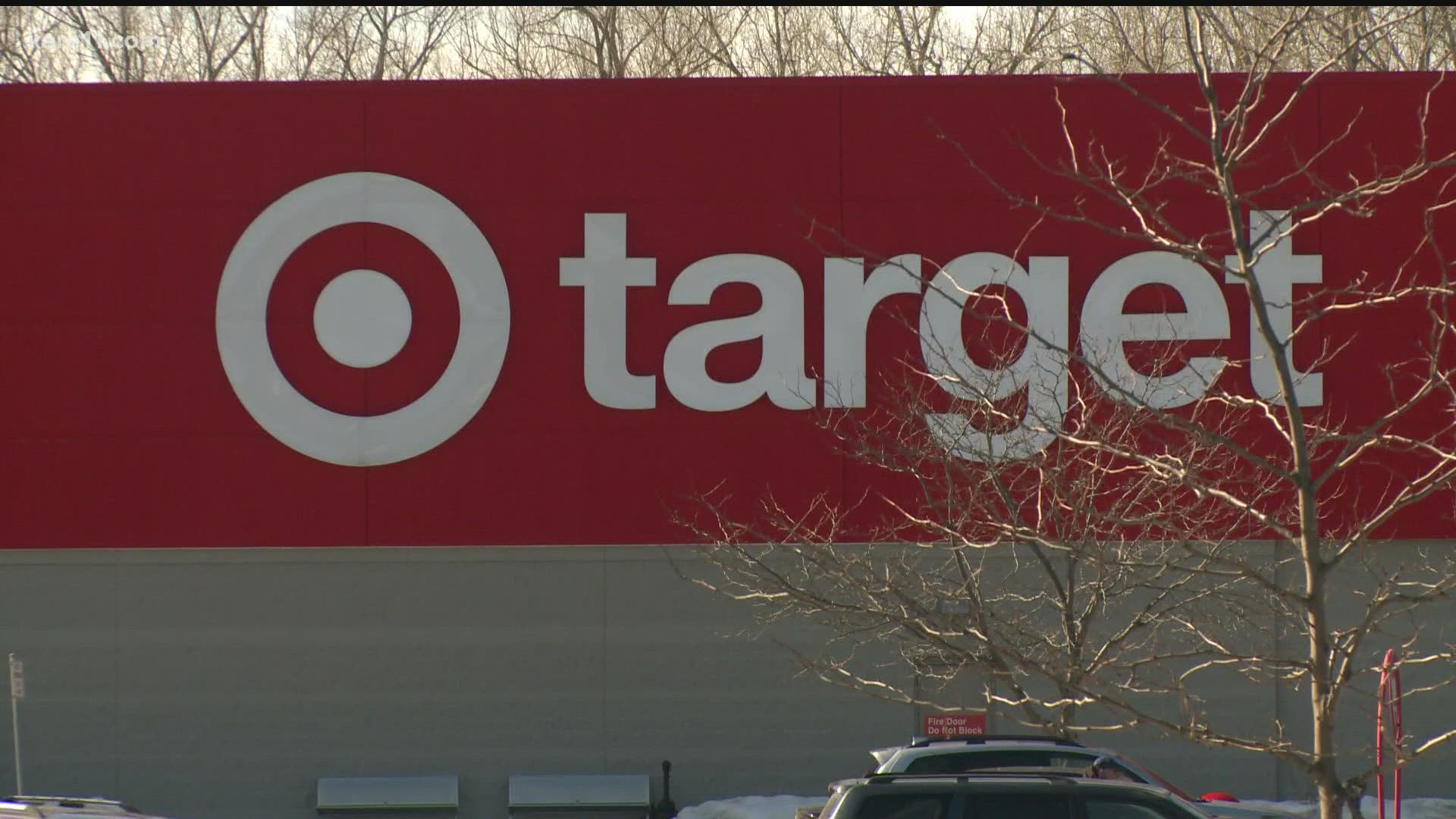MINNEAPOLIS — Workers at Target stores and distribution centers in places like New York, where competition for finding and hiring staff is the fiercest, could see starting wages as high as $24 an hour this year.
It currently pays a universal starting wage of $15 an hour.
The new approach will apply to hourly team members working in Target stores, supply chain facilities and headquarters locations.
The new starting wage range is part of a company plan to spend an additional $300 million on its labor force this year that will also include broader, faster access to health care coverage for its hourly workers
“The market has changed," said Target CEO Brian Cornell in an interview with The Associated Press. ”We want to continue to have an industry-leading position.”
Target also plans to expand access to health care benefits for team members. The new initiative will include:
- Expanded access: About 20% of Target’s team will now be newly eligible for comprehensive health care benefits. Hourly store team members who work a minimum average of 25 hours a week will be eligible to enroll in a Target medical plan, down from the previous requirement of 30 hours per week.
- Reduced enrollment waiting periods: Target also will reduce the waiting period for all eligible hourly team members to enroll in a Target medical plan. Depending on position, eligible team members can access comprehensive health care benefits three to nine months sooner.
- Enhanced benefits: Target will provide additional benefits, including virtual physical therapy at no cost, enhanced fertility benefits and other new wellness offerings, as part of most Target medical plans. Team members also will gain faster access to 401(k) plans.
Target set a new marker for the retail industry back in 2017 when it announced it would increase hourly wages to $15 by 2020. But U.S. labor-market dynamics have changed during the pandemic, with many employers facing severe worker shortages. And many of Target's rivals are now paying a minimum of $15 per hour or more.
Target, which has roughly 1,900 stores and 350,000 employees in the U.S., noted that the turnover rate among its employees is now actually lower than before the pandemic. The retailer also said that it was able to exceed its goal of hiring 100,000 seasonal workers at its stores and 30,000 in its supply chain network across the country throughout the 2021 holiday season. But Target realized it needs to have an even more localized approach to wages. It said it is still doing its analysis and declined to name the areas that will be getting the highest starting wage.
“Our team is at the heart of our strategy and success, and their energy and resilience keep us at the forefront of meeting the changing needs of our guests year after year,” said Melissa Kremer, Target's chief human resources officer, Target. “We want all team members to be better off for working at Target, and years of investments in our culture of care, meaningful pay, expanded health care benefits and opportunities for growth have been essential to helping our team members build rewarding careers.”
When Target first announced in 2017 it would pay $15 an hour by 2020, it was one of the first major retailers to do so. But during the pandemic, a number of rivals like Best Buy followed suit, with some surpassing Target. Costco raised its minimum hourly wages for workers from $16 to $17 last fall. Amazon’s starting wage is $15 per hour, and the e-commerce giant's nationwide average starting wage for jobs in transportation and fulfillment is $18 an hour.
Walmart remains a laggard: Last fall, it boosted its minimum wage to $12, from the $11 hourly base it established in 2018. Walmart also raised the hourly wages for more than 565,000 store workers by at least a dollar.
"The pandemic has changed the dynamics," said Clement Marriott, founder of Empowers Staffing Inc. "They want not only just the higher pay, they want to see a package deal."
Marriott said there is also higher demand for remote work with some saying they will take a pay cut in order to work from home.
While some want to work from home because of the flexibility it offers, Marriott also said concerns remain around catching COVID-19 at work.
Many retailers say they're struggling to find workers. According to a recent survey of more than 100 major retailers with annual revenues between $500 million to more than $20 billion, 96% said they’re having trouble finding store employees. The survey conducted by global consulting firm Korn Ferry in January also found that 88% said it was difficult to find distribution-center workers.
That demand for workers has steadily pushed up wages, particularly for lower-income workers. According to the Federal Reserve Bank of Atlanta, pay among the poorest one-quarter of workers jumped 5.8% in January, compared with a year ago. That is double the gains for the highest-paid one-quarter.
In January, average pay for retail workers, excluding managers, jumped 7.1% from a year earlier to $19.24 an hour. That’s faster than pre-pandemic gains. In January 2020, pay for retail workers rose 4.2% from the previous year. In January 2017, it rose just 1.7% from the previous year.
According to the Minnesota Department of Employment and Economic Development (DEED), wages have been increasing rapidly over the past two years in the state, especially for entry-level, hard-to-fill positions like those at Target.
According to a DEED report, average hourly wages for all private sector workers rose 78 cents over the month in December 2021. Over the year average hourly earnings rose $1.96, up 6.1% and since Dec 2019 they are up 9.8%.
Watch more local news:
Watch the latest local news from the Twin Cities in our YouTube playlist:

